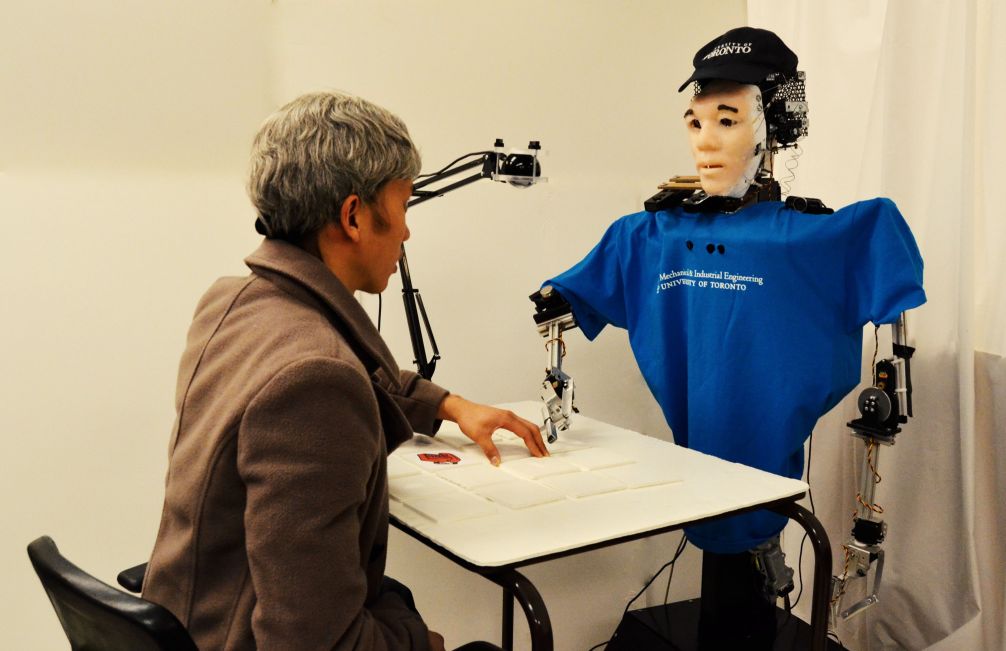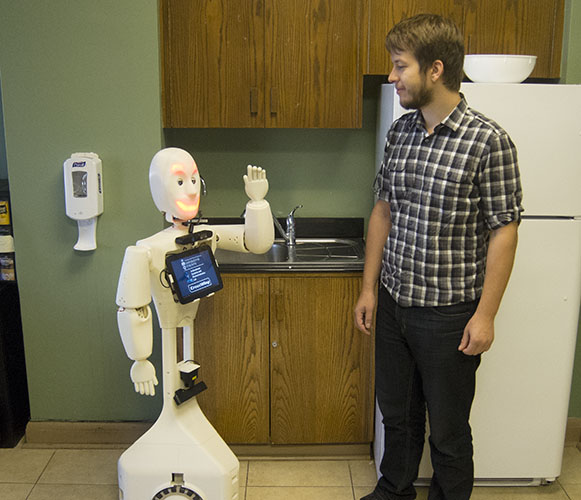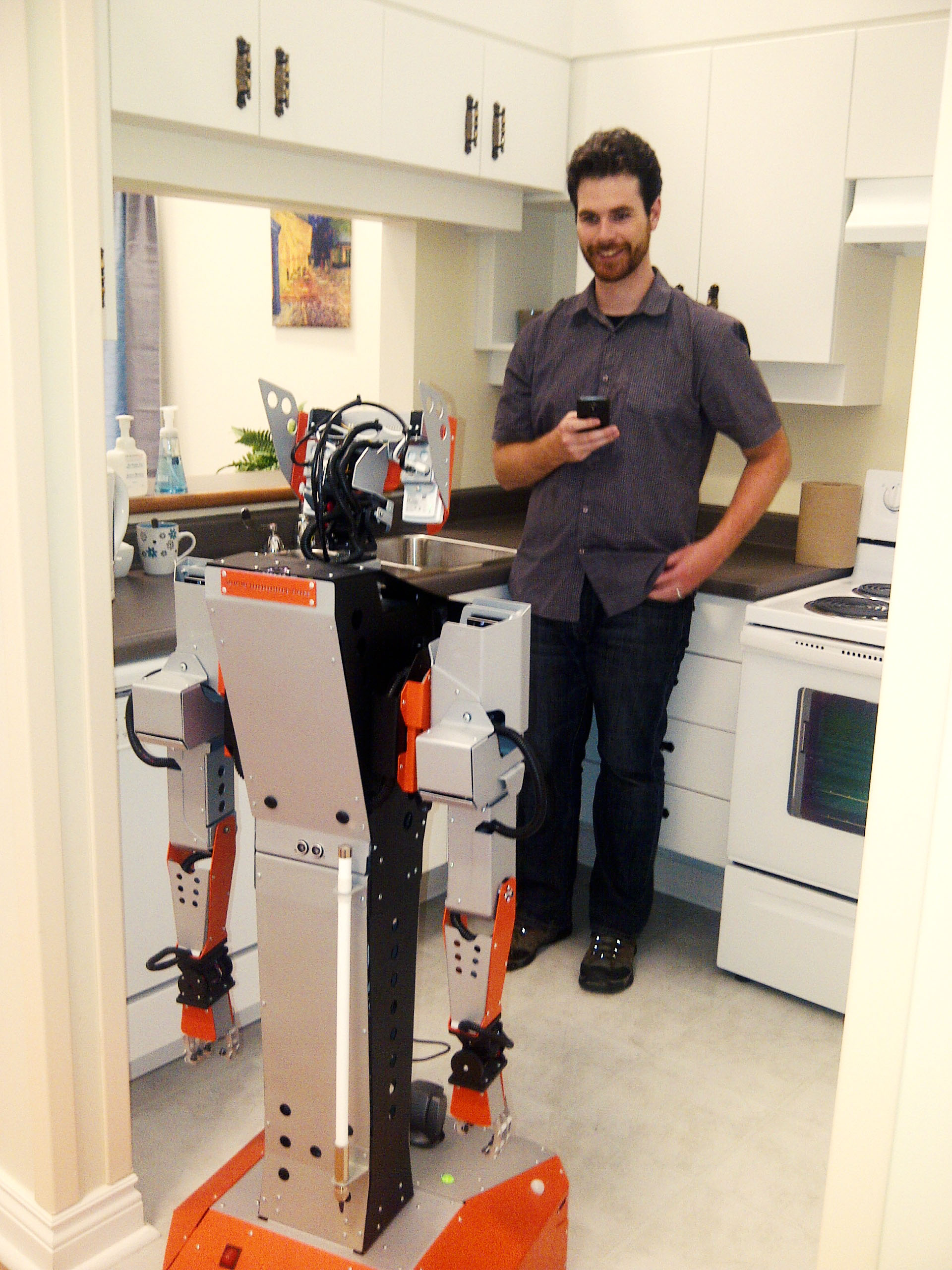University of Toronto |Faculty of Applied Science and Engineering |webmaster
All contents copyright © Autonomous Systems and Biomechatronics Lab.
Assistive Robotics
This research focuses on the development and use of innovative robotic technologies to provide person-centered cognitive interventions to improve the quality of life of elderly adults. Namely, the objective of this work is to develop intelligent assistive robots to engage individuals in social human-robot interactions (HRI) in order to maintain or even improve residual social, cognitive and affective functioning.
Specifically, this work involves the design and development of the sensory systems and HRI control architectures for robotic technology to facilitate natural and realistic social interactions during activities of daily living and cognitive exercises for elderly individuals. The control architectures will allow a robot to monitor activities and determine the emotional state and intent of the user. Thus, as an informed intelligent agent, the robot can act as a social motivator by providing appropriate learned behaviours such as cues, words of encouragement, task assistance, and congratulations to facilitate the completion of tasks.



As the population of the world is aging rapidly, this increase in the elderly population is putting a strain on healthcare systems as older adults use a disproportionately large portion of the available healthcare services. While the demand for healthcare is increasing, large numbers of
healthcare workers who are a part of this aging population are also retiring. The drastic increase in the number of older adults that need care and the decline in the number of healthcare workers could result in the diminishing of the quality of elder care.
This is particularly true for long-term care facilities, where frail older adults that have more complex cognitive and/or physical needs usually live. For these individuals, it is important to provide quality care while also delivering programs that can enhance their independent abilities, increase their social engagement and provide cognitive stimulation.
The importance of such activities to promote active and healthy living has been well documented to be lacking in long-term care facilities. Both social and cognitive stimuli have been found to promote the psychological well-being of older adults and minimize the risk of social isolation. The implementation of such interventions requires considerable resources and people, and implementing and sustaining them on a long-term basis can be very complex and time-consuming for healthcare staff working in long-term care facilities. An alternative approach that could be as effective is through the use of autonomous assistive robots for the implementation of such interventions.
Videos:
An Intelligent Socially Assistive Robot-Wearable System for Personalized User Dressing Assistance, June, 2023:
Proof of concept video for Tangy learning from demonstration for high-level tasks from non-expert human demonstrations, January 4, 2017:
Tangy facilitating a Bingo game, a demonstration of the robot's capabilities and the target application, June 7, 2015:
Brian 2.1's interactive abilities being shown and discussed by Prof. Nejat, February 14, 2013:
Casper the friendly robot assisting in the kitchen, a demonstration of the robot's capabilities and target application, Sept 4th, 2013:
"Brian 2.0" our socially assistive healthcare robot playing the memory game, March 19, 2010:
"Brian 2.0" our socially assistive healthcare robot displaying body language and facial expressions, August 13, 2010:
Funding Sources: Natural Sciences and Engineering Research Council of Canada (NSERC), the Canada Research Chairs (CRC) Program, AGE-WELL (which is supported by the Government of Canada through the Networks of Centres of Excellence (NCE)), the Connaught Award, Canada Foundation for Innovation (CFI), Canadian Institutes of Health Research (CIHR) and Ontario Research Fund (ORF).

